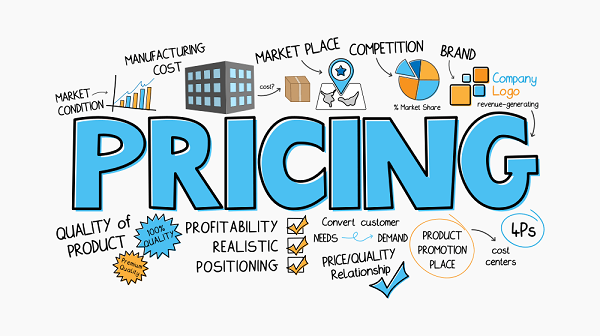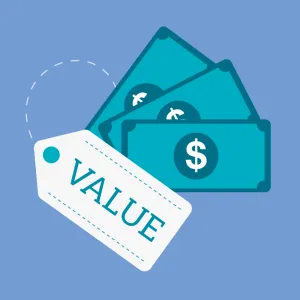Image Source
In Chapter three of "The Seen, The Unseen, and The Unrealized", Bylund explains what prices communicate to consumers and the importance of prices to producers. The example of Adele selling apples is expanded on and it is used to show what must be considered when pricing a good or service for consumers. Adele must consider how much land, labor, resources, and time it will take to produce these apples. Bylund (2016, p. 32-33). If the price of any of these things goes up, the price of her apples will go up. However, she cannot just increase how much she sells them for without considering the value of them as well. Consumers are only willing to pay so much for a product. For me, I would be willing to pay $2.00 per apple. Anything more than that would cause me to hesitate. I would rather spend that money on something else, apples are not my favorite fruit and they are easily accessible. To someone who loves apples, they would most likely be willing to pay more per apple. If there was not an abundance of apples in an area, consumers would pay more because apples are scarce in the area.
I work at a boutique. We buy clothing, accessories, home decor, etc. wholesale. That means we buy it directly from the producer for a low price. We also pay them shipping. But the shipping costs depend on each company we order it from and how much we order. Once we get the items in, we price them depending on quality of items, how much the wholesale price was, how much the shipping cost was, how much labor and time it takes for us to have it ready to be put out for sale, how much the employees get paid for their time, how badly people want it, how easy it is to get it back in stock, and how much we think people will value it at. Many things must be considered when we price the items because we must still make a profit that feel is worth the labor and money we already spent to get it in. For example, we wholesale purchase a blouse for $17.00 each. They come in packs of six, meaning we get two of each size; small, medium, and large, or 3 extra large, 2 1XL, and 1 2XL. If we just buy one pack of blouses, the shipping cost of the package is usually between $12-$24, depending on the brand. We will have to unpackage the blouse, inspect for damages, cut tags off, hang them, steam them, add them to inventory, print barcodes, make our tags, and then put them out. On top of all of those things, we bring in a model to take pictures in the blouse. We then use these pictures for social media and for our website. Starting out at $17.00, we add between $2.00 and $4.00 depending on shipping. That brings us to roughly $20.00. If the employee makes $10.00 an hour, it takes us about 1.5 hours to unpackage, hang, steam, print barcodes, and take pictures in the item, meaning we must make at least $15.00 on the blouses. That brings us to $35 dollars. We could stop there, but we also must consider the electricity we used, the price of the distilled water we used to steam the blouse, and the profit we must make to be able to continue to grow our business. We would generally sell a blouse that cost us $17.00 for about $52.00. Our customers are willing to pay that price because the item is good quality and unique. If the employees are nice and helpful, the store is clean and organized well, and the items are not easily found at a lower price, consumers are usually willing to pay more for each item.
"Since Adele bears this uncertainty, which means she will suffer the loss if it doesn't work out, she's the entrepreneur."
Like Adele, our boutique still faces uncertainty. Unlike grocery stores, where food is a basic necessity, people do not need the clothes we sell. Because we are not guaranteed to sell each blouse at the markup price, we have to make up for that by price each item we carry just a little higher. As an entrepreneur, my boss must consider that some of the items she purchases will fail. We may have a dress or a blouse for months before someone buys it. Uncertainty is a big reason why we do not sell every item we purchase.
Knowledge in Society
"We must look at the price system as such a mechanism for communicating information if we want to understand its real functions-" Hayek(1945 ,p. 526)
The price system is not just about money. it is about value, and proclaim how much an item is valued for. For instance, the price of gas continues to rise. people value going to work, hanging out with friends and family, and going places that make them happy. So even if the price of gas continues to rise, we may complain about it but at the end of the day we will continue to pay for it because we value other things more than the money we spend on gas. Another example would be glasses and contacts. I wear contacts everyday and I am willing to pay the price for them because I value clear vision and no headaches more than I value the money I pay for eye insurance, optometrist appointments, and the contacts and glasses I own.
Resources
Bylund, P. L. (2016). Chapter 3: What Prices Communicate. In Seen, the unseen, and the unrealized: How regulations affect our everyday lives (pp. 27-45). essay, Lexington Books.
Hayek, F. A. (1945) The Use of Knowledge in Society. American Economic Review, 35(4), 519-30.

I agree with a lot of what you said in your article. I especially liked your quote about paying for clear vision:
I’m going to optometry school in the fall and it is always cool to hear about people’s relationship with their vision and if they are corrected or not, but I think you bring up a great point about how you value a product. As someone who already has very good vision, I would not be willing to spend lots of money on contacts to make it just a little bit sharper. However, people who really struggle to see are happy to pay that money because the glasses or contacts are worth more to them.
I also think your anecdotes about working for a boutique do a great job of summarizing what the price consumers pay conveys about the production journey the product their buying endured. At any step along the process from factory to warehouse to truck to boutique, there could be complications or increases in price that affect the price of the product. If the price of fabric increases, that will be reflected in an article of clothing. If the price of gas increases, the price of shipping will increase, which will be reflected in that same article of clothing. The number that the consumer sees has so much more to the story than what meets the eye. I hadn’t even considered the costs of things like electricity, water, and manpower in the store like you mentioned. There is also quite a bit of uncertainty that comes with selling a product which can be factored into the price. I’m sure fashion changes relatively often and that can be detrimental to a boutique that has a lot of stock that has gone out of style. You almost have to prepare for this uncertainty by baking in some guaranteed losses into the prices of the goods so you’re covered in the event that some clothes do not sell quickly or at all. A business owner has to be privy to these sorts of decisions to truly maximize profit while also selling their product at an amount that customers are willing to pay.
Great job in your response! The parallels you drew between the author’s illustration of pricing goods or services for consumers and your work experience as a retailer in a boutique shop was a great connection. Currently, I work at a mass retailer as well. Like your boutique shop, different companies supply our store with their merchandise, and we sell their goods to our customers. The businesses that stock our store’s inventory conduct large amounts of research into their target market, while factoring in a variety of external factors such as shipping costs, price of essential resources, and product demand to determine an equilibrium with their product’s price point. In your response you mentioned,
I agree completely with your viewpoint on the price point system. As you mentioned, prices are set to measure value. This is the reason companies selling essential commodities, such as oil, have so much controlling power. Gas and oil sellers understand their products are being used internationally every day. As a result, they can marginalize their oil and sell it to their distributors at different rates which will differently influence its selling point. Despite gas prices rising consistently across the world, consumers are continuing to purchase it. This continuous purchase of gas communicates to the distributors that they can continue raising prices. However, if the oil companies were to raise their prices too high, what would happen? Some customers may not equally value the price required to purchase the services provided. Consequently, many users may convert to other more affordable means of transportation such as trains, buses, bicycles, or even walking.
In my response I outlined that all organizations go through this thought process with their prices scaling continuously. No matter if it refers to essential goods like apples, or luxurious services like lawn mowing. All sellers account for land, labor, and resources when measuring their price point. If any internal or external factor changes from the mean, it will directly impact the product’s price point and the company’s gross margins. Ultimately, the consumer holds the true power in the exchange. If customers are not purchasing the product or service frequently, every other element is rendered meaningless.
Congratulations @mirandabealll! You have completed the following achievement on the Hive blockchain And have been rewarded with New badge(s)
Your next target is to reach 50 replies.
You can view your badges on your board and compare yourself to others in the Ranking
If you no longer want to receive notifications, reply to this comment with the word
STOPCheck out our last posts:
Support the HiveBuzz project. Vote for our proposal!